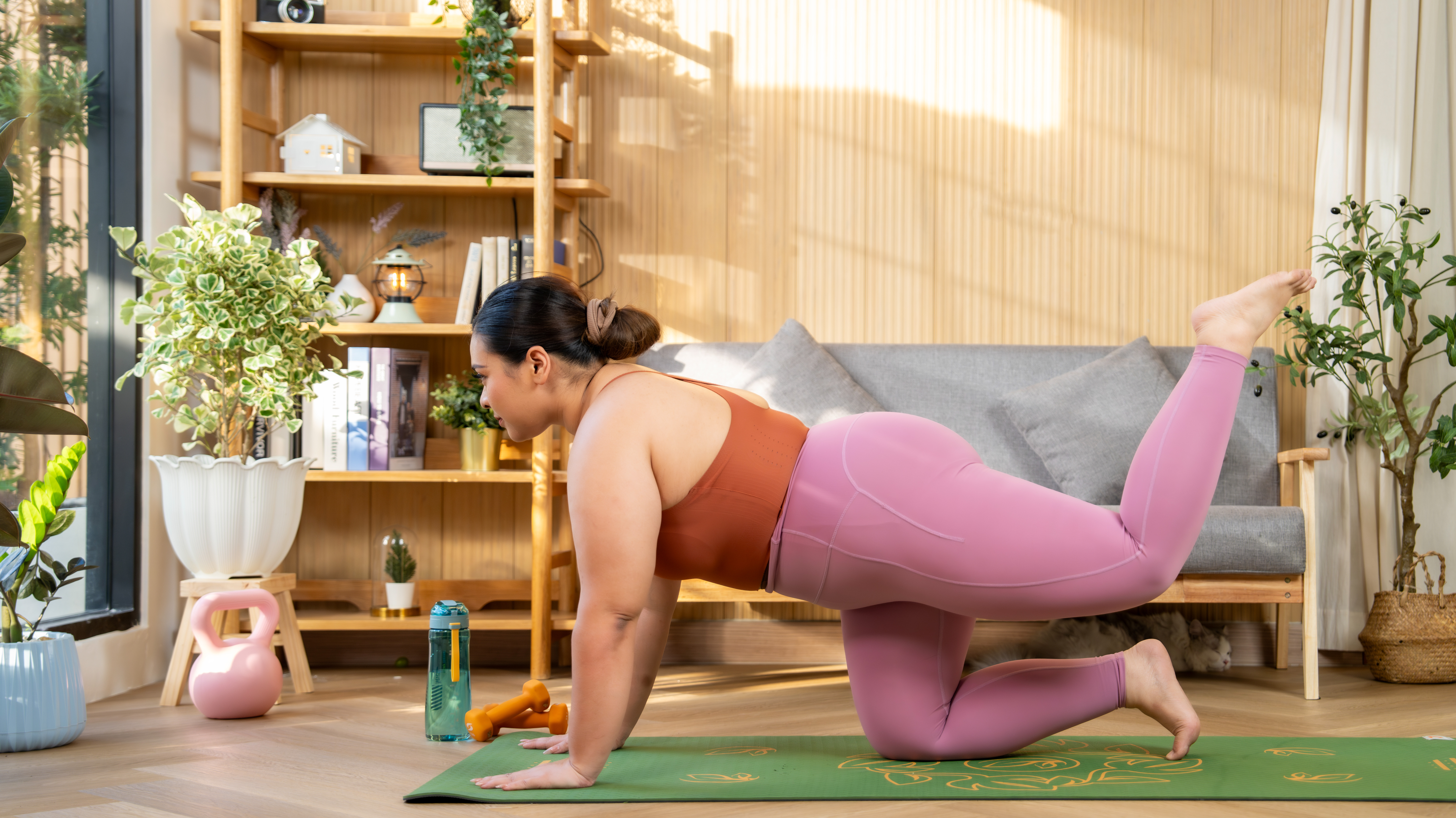It only takes two minutes a day to safeguard your spine from poor posture, says this top mobility coach
Use this daily drill and stop stressing about sitting all day

Mobility coach Roger Frampton rose to prominence when his TEDx Talk Why Sitting Down Destroys You went viral. Since 2017, his call-to-arms against sedentary living has been viewed almost five million times, so it was a surprise when he told me that he doesn't worry about being sat at his desk all day—and neither should you.
"You'd think that I'm active all the time but I spend a ton of time on my laptop because I coach online," says the author of Stretch and The Flexible Body, and founder of The Frampton Method. "I'm not in the gym 24/7 like a PT. Sometimes there are days when I'm sitting on my laptop for 12 hours at a time but I don't really mind."
Frampton says he doesn't stress about sitting all day because he always makes time for mobility training later in the day.
Typically he'll spend 60 to 90 minutes cycling through passive stretches to develop flexibility and stance training—which involves building strength with mobility—once his laptop is closed.
But what if stretching and mobility training isn't part of your daily routine?
For those people (which is frankly everyone apart from Roger Frampton) he recommends two things: if you’re struggling with poor posture, strengthen your shoulder blades, beginning with a daily two-minute drill; and if you’re working from home, then work on the floor.
How to strengthen your shoulder blades
To protect your body from sitting all day, which can contribute to poor upper-back posture, use shoulder-blade strengthening exercises.
Get the Fit&Well Newsletter
Start your week with achievable workout ideas, health tips and wellbeing advice in your inbox.
Frampton says these can be done at home or work. All you need is your bodyweight for the entry-level version, and a broomstick and a couple of sturdy chairs for the more advanced option, both of which Framption demonstrates in this Instagram post.
A post shared by Roger Frampton (@rogerframpton)
A photo posted by on
1. Shoulder blade retraction
"Strengthening the movement of squeezing the shoulder blades together pulls you into an upright position," says Frampton.
Practice this drill for 1-2 minutes a day or when your upper back starts to feel tight.
How to do it:
- Stand facing a wall and place your palms flat on the wall at shoulder height with your elbows slightly bent.
- Slowly retract your shoulder blades to bring your body slightly closer to the wall.
- Then pull your shoulder blades apart to bring your body further away from the wall.
- Get used to mobilizing these muscles and joints and progress to performing this exercise with straight arms.
2. Inverted row
For the advanced version, you will need a couple of sturdy chairs and a broomstick handle.
Aim for 50 a day for awesome posture, says Frampton.
How to do it:
- Securely rest the broomstick across the chairs so you can use it to support your weight.
- Lying on the floor underneath the broomstick, grasp the handle with an overhand grip, straighten your arms and walk your feet away from you until your heels are the only part of you resting on the floor and your body is in a straight line from head to heels.
- Slowly retract your shoulder blades to lift your body, then pull your shoulder blades apart to lower your body.
Why you should work on the floor when working from home

If you're unable to practice mobility training every day, even if for just a few minutes, Frampton says that niggling pain and tightness from sitting all day can build up.
But setting up your desk on the floor can make gentle stretching and mobility training a natural part of your day.
"Set up an area where you're sitting on the floor with your back against a wall to keep your back upright," says Frampton.
"Sit with your legs straight, sit cross-legged, sit with one leg tucked under your body, sit kneeling, sit on yoga blocks.
"The great thing about sitting on the floor, rather than on a chair, is you stretch and mobilize your body without even thinking about it."
If you can't possibly give up your home desk setup, Frampton suggests swapping your chair for a stool or bench. This will prevent you from leaning back, which will stop you from slouching and putting your spine under undue strain.

Sam Rider is an experienced freelance journalist, specialising in health, fitness and wellness. He is also a REPS level 3 qualified personal trainer.
-
 “It was so strenuous”—how a celebrity PT went from almost quitting the gym to the new star trainer on Chris Hemsworth’s Centr app
“It was so strenuous”—how a celebrity PT went from almost quitting the gym to the new star trainer on Chris Hemsworth’s Centr appA heavy setback on his first day in the gym almost turned Korey Rowe off exercise for good—but one small step got him back on track
By Sam Rider
-
 A personal trainer says these are the exercises to do if you’ve got no equipment and only 20 minutes to spare—here’s my verdict
A personal trainer says these are the exercises to do if you’ve got no equipment and only 20 minutes to spare—here’s my verdictThis quick workout targets the legs, glutes and core
By Jennifer Rizzuto